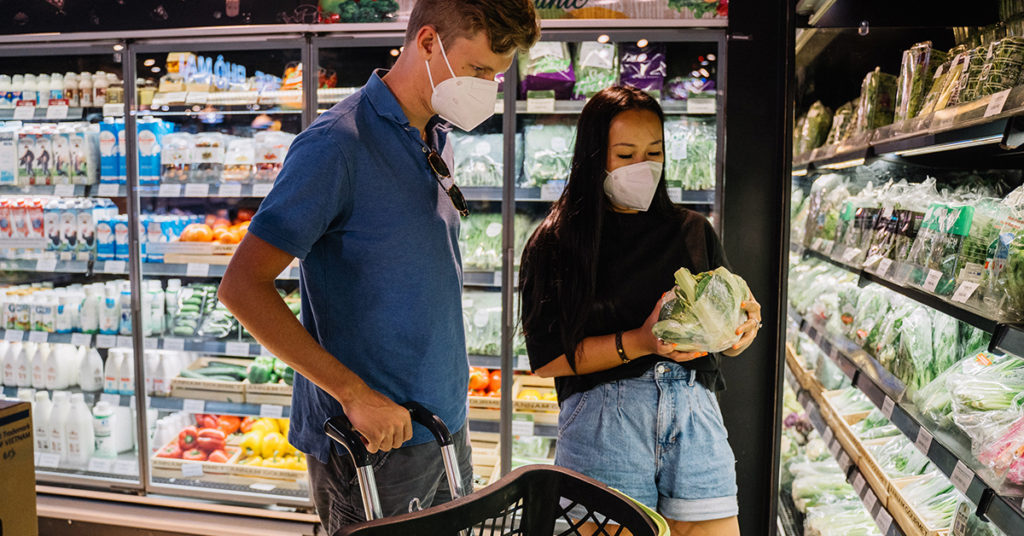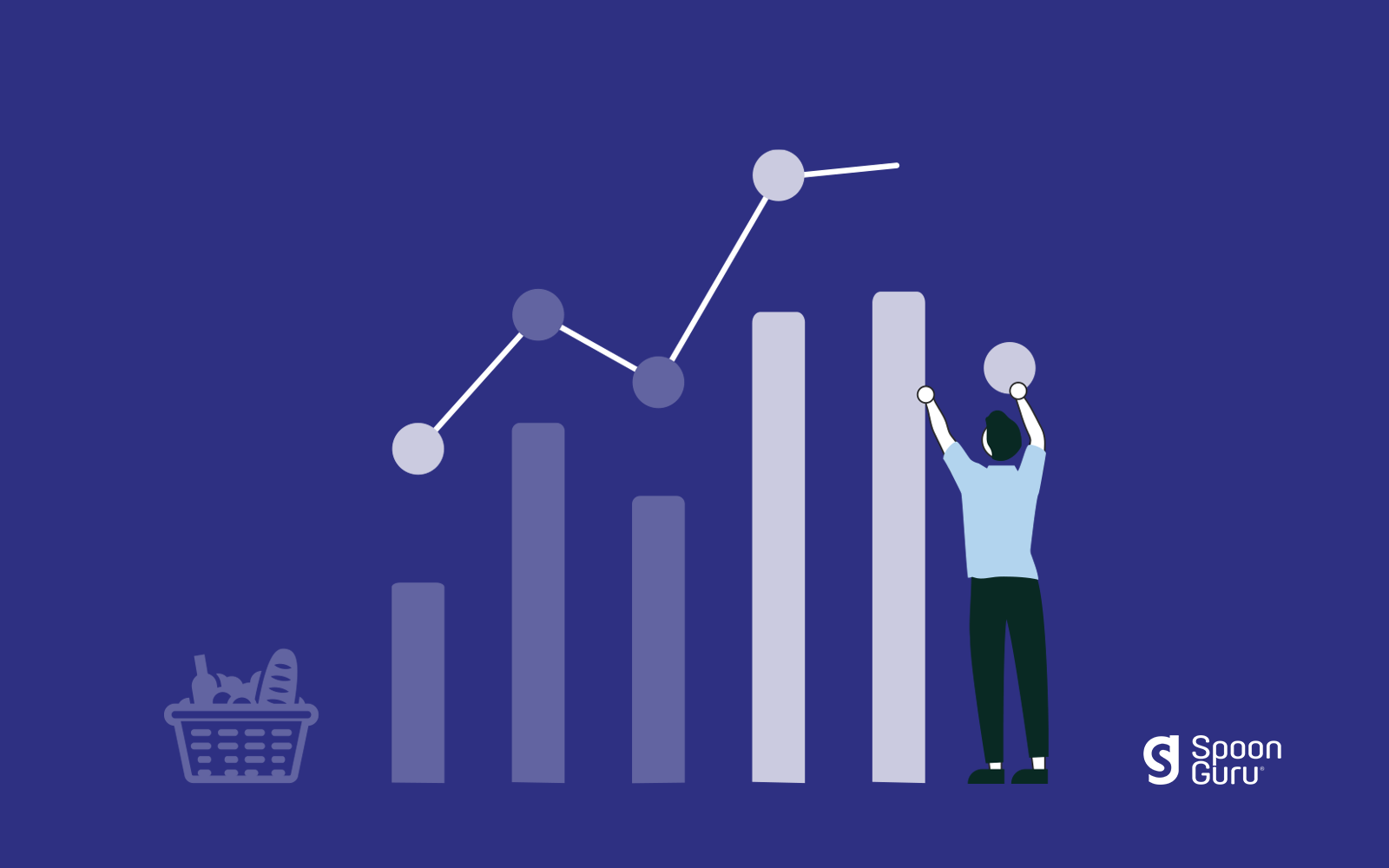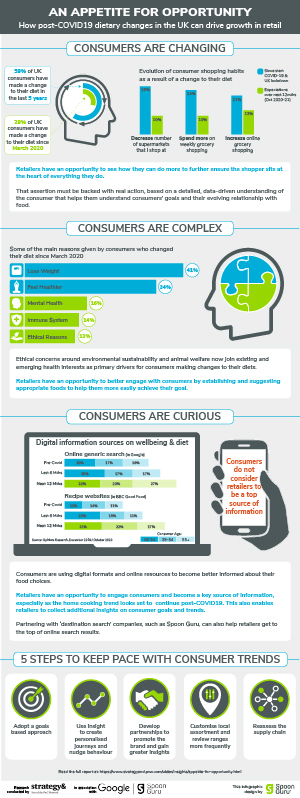Spoon Guru is delighted to share the findings of the latest research conducted by PwC in association with Google and Spoon Guru. The study analyses the impact of the Covid-19 pandemic on UK consumer behaviour and has produced compelling insights.
A representative sample of over 2,000 UK adults on their changing dietary habits and associated shopping behaviours were surveyed, initially in December 2019 and again in October 2020 to understand the impact of the pandemic. Spoon Guru was chosen as a preferred partner to provide subject matter expertise on nutritional science and insights into dietary trends.
The full report, An Appetite for Opportunity – How changing dietary goals can drive growth in retail and consumer goods has now been made available to download.
With 59% of consumers having made dietary changes in the last 5 years, it’s clear that lifestyle and mindset shifts have been steadily reshaping shopper behaviour. However, this latest study has found that the COVID-19 pandemic has further accelerated this change, with 29% of consumers having changed their diets since March 2020. While it appears that there are two main goals driving this dietary change – a desire for healthier living, and aspirations to be more environmentally friendly – convenience and budget are also major concerns for many shoppers.

Key Findings: Health & sustainability are key reasons for dietary changes, but retailers are not considered a good source of information.
The primary driver for people making changes to their diet is a growing concern around health. This includes making dietary changes for weight loss (41%, October 2020), feeling healthier (34%), and looking to immune system maintenance (14%).
The other key factor is that consumers are increasingly modifying their diet and lifestyle for ethical reasons. Issues such as sustainability and animal welfare are fuelling this change, with around one in six consumers, particularly those in younger generations, stating that one of these two reasons had prompted a review of their diet.
When consumers were asked about their go-to source for finding food-related information or inspiration, retailers weren’t cited as a top source across any of the segments. There is a clear opportunity here for retailers to engage consumers with personalised information to help them meet their health, wellness, or sustainability goals.

5 steps to keep pace with consumer trends:
The report has identified the following steps for retailers to keep pace with consumer trends:
1. Adopt a goals-based approach
Rather than segmenting customers by niche product categories such as gluten-free or vegan-only, find out what consumers want to achieve at different moments in time and help them to achieve those goals.
2. Use insight to create personalised journeys and nudge behaviour
Netflix and YouTube have used insights to create highly personalised, curated user experiences. The challenge is for grocers to use shopper data and insights in a similar way to provide a comparable level of personalisation, and use nudge behaviour to help consumers achieve their goals.
3. Develop partnerships to promote the brand and gain greater insights
There is a clear opportunity for retailers to use digital technologies to enable food search and discovery, and provide accurate nutritional advice and personalised shopping experiences. Partnerships with AI-based food search services such as Spoon Guru can also benefit retailers, especially when it comes to helping consumers achieve their dietary goals.
4. Customise local assortment and review ranges more frequently
These insights show that consumers are continuing to change their diets for a number of reasons. This reinforces the need to further localise product ranges and promotions to meet the needs of different consumer segments.
5. Reassess the supply chain
As interest in sustainable, plant-based products increases, so do calls for improved transparency about where and how our food is sourced. This presents both a challenge and opportunity for retailers and CPG companies, not only to meet the growing demand, but to give their shoppers easy access to the information they want.

